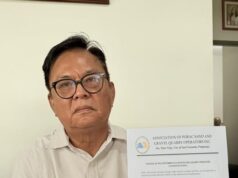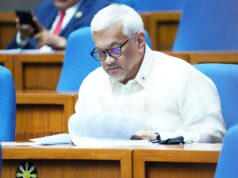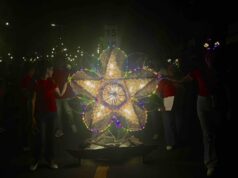Having been born and raised a Catholic, I was aware of priests from a very early age.
Our family went to church and heard mass and attended other sacraments and ceremonies. I became aware of Monsignor Puno, our parish priest in San Fernando, and Father Lansang, then a young priest in the parish who played basketball in the church patio court with the “patio boys”.
In elementary school which I attended in Don Bosco, there was Fr. Rozen, a Dutch Salesian priest who established the school in Pampanga. He drove a black Volkswagen beetle, wherein he snugly fitted his large body and jolly tireless efforts soliciting donations to build the school.
With his success, he was joined in Don Bosco by Fr. Lopez, a young Spaniard who was as lean and serious as Fr. Rozen was the opposite. We used to refer to them as Laurel and Hardy, behind their backs of course.
But they were good people and popular among the Bosconians and the local community.
In high school, I became exposed to the Jesuits. Apart from the fact that I now start to study in Manila in the premier school run by the Jesuits in the Philippines, I began to involved in an entirely new world.
I had to adjust to the school system and culture. The faculty and the students were of a superior caliber than this young probinsiano was used to. And the Jesuits were from a different world entirely than the priests I was used to.
Fr. Mcnally, the high school principal, an American Jesuit had movie star looks and eloquence, demontrated every morning in his short talk during assembly at the covered courts. Fr. Francisco Araneta was the first Filipino Jesuit president of the school.
Fr. Mayo was the dean of discipline and together with Mr. Larry Vergara, his deputy, they implemented the “wack wack” where they paddled our behinds with a flat wooden board while we maintained our smiles or else the ritual was repeated as punishment for our disciplinary infractions.
There were the Jesuit scholastics, mostly American young men studying to become priests and now assigned to teach and go through the process of serving and missionary work.
They would also coach us in basketball, football, track and field. In fact, when some of us would be quarreling, they will bring us to the field behind the covered courts, make the quarreling students put on boxing gloves and referee them in a 3 rounds of supervised boxing.
Then the protagonists will be required to shake hands and put their differences behind.
An occasion which I still remember clearly up to now was when we were attending our regular Friday mass, while we were kneeling during the consecration, a fellow student beside me chose not to kneel but to squat on the cement floor with his legs in a lotus position.
Immediately right after the consecration, I saw this white cassocked Jesuit scholastic come up behind us, grabbed my squatting seatmate by his collar, pulled him up with such force that in bringing him to his feet all the buttons of his polo shirt popped out. Some of these buttons fell on me and I remembered being so scared.
Up to now, I can not remember the name of that Jesuit scholastic.
I do remember Fr. Luis Candelaria and Fr. Aureo Nepomuceno, both Kapampangans and my Jesuit teachers during my third and fourth year. They taught me a lot and in fact there was even a time when I considered studying for the priesthood and becoming a Jesuit myself.
In college, I met and studied under the “heavyweight” Jesuits. Fr. Horacio dela Costa taught us history and the classical studies. Fr. Michael McPhelin, economist from Harvard, (“Where were you when God gave out brains, Lising?And Lising answered, I was with you, Father.) frequently made us tremble in class but sometimes came to class with a bottle of wine, announcing, “ It’s St.Patrick’s day. Let’s celebrate!”
Fr. Jose Cruz, my idol, opened a whole world of meaning and marvel to me in philosophy. Fr. Cronin coached basketball and taught theology (Remember chastity is like a balloon. Just one prick and it’s all gone!).
Fr. Roque Ferriols, when he was in his foul mood before his needed sabbatical, rushed out of the chapel while in the middle of saying mass to confront a noisy jeepney driver in the parking lot, “Hoy. putang ina mo! Ang ingay ingay mo, nagmimisa ako dito!” Fr Henry Irwin taught rhetoric and opened us to the exciting world of drama and literature. Fr. Eliazo, who taught Spanish, up to his old age, sometimes forgot to wear his pants under his cassock. It is fortunate that then we were still an all-male school.
There are many other Jesuits whom I have been privileged to know and interacted with.
I have not been fortunate to become a Jesuit but fortunate enough to have been supported and enriched by them. Many remain friends. There are two in our batch, Fr. Jose Mario Francisco and Fr. Joel Tabora, both leaders in Jesuit institutions. Another classmate, Fr. Honesto Ongtioco, is the bishop of Cubao.
Jesuits are not only priests but also excell in other fields and endeavors, like law, economics, sociology, physics, literature, psychology and many others. Now, for the first time in the history of the church, the 266th pope, Jorge Antonio Bercoglio, Pope Francis, is a Jesuit.
Now there is no need for the so called “Black Pope” as the head of the Jesuit order is designated in view of the order’s influence and vow of absolute loyalty to the pope in addition to the vows of poverty, chastity and obedience. Ad Majorem Dei Gloriam!




